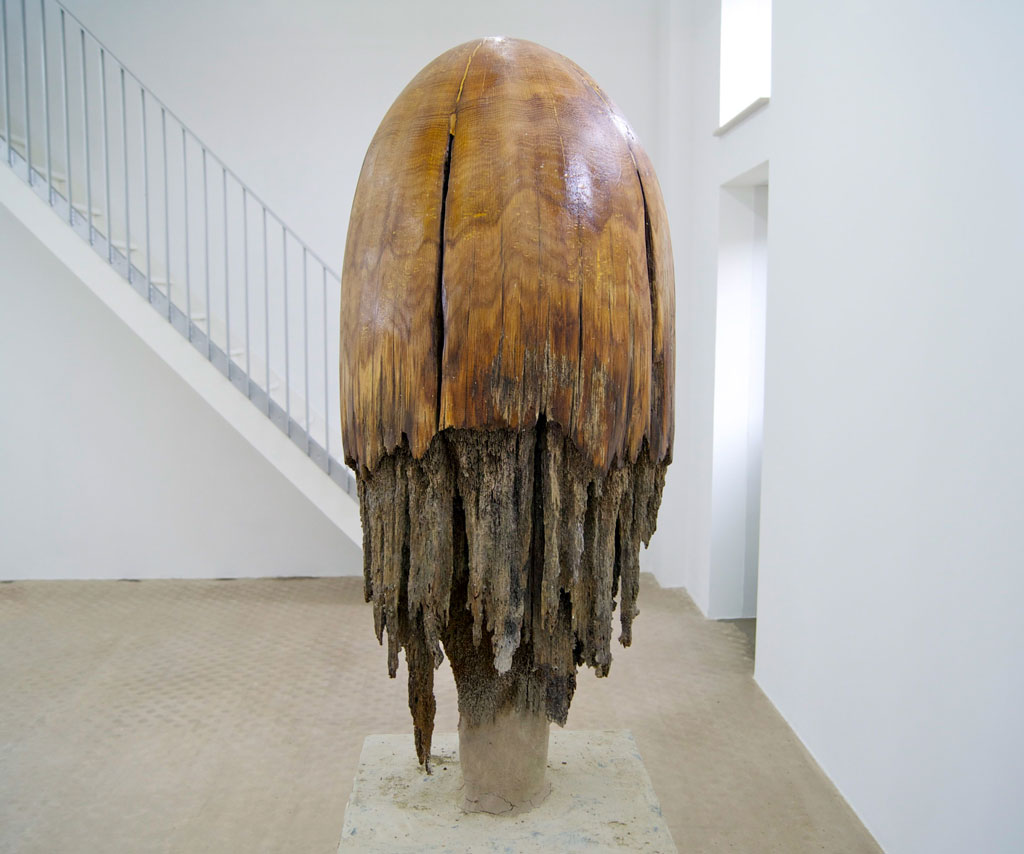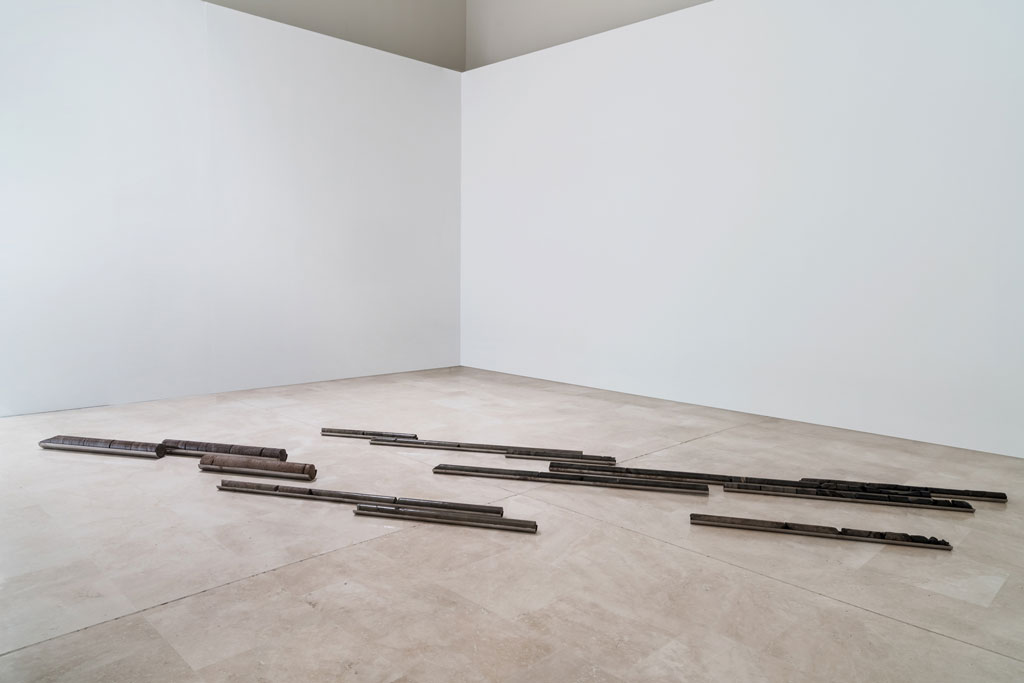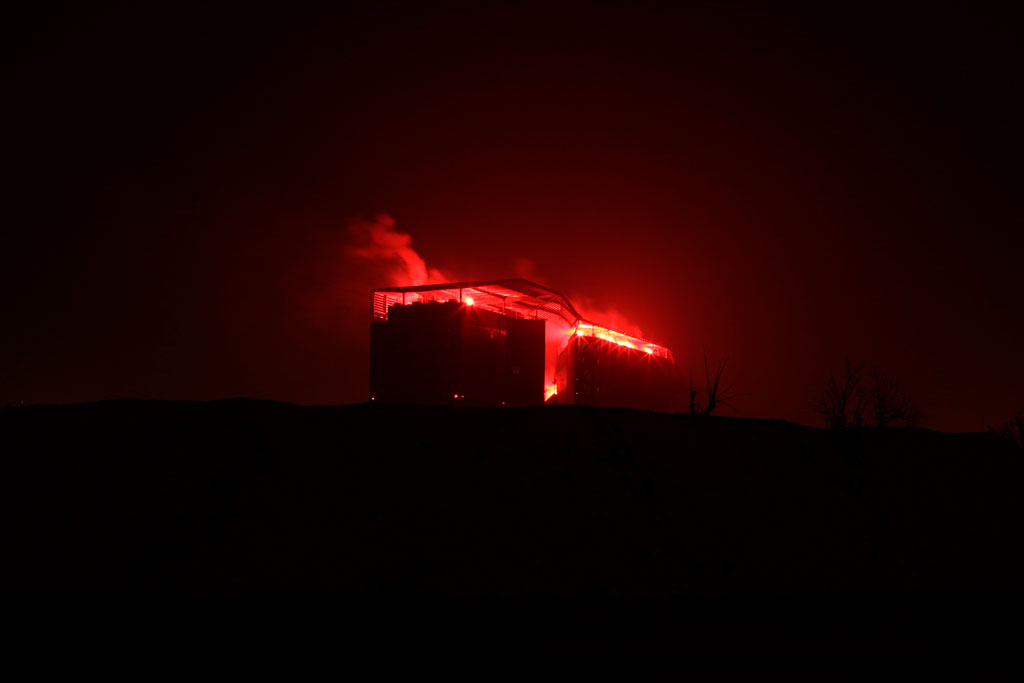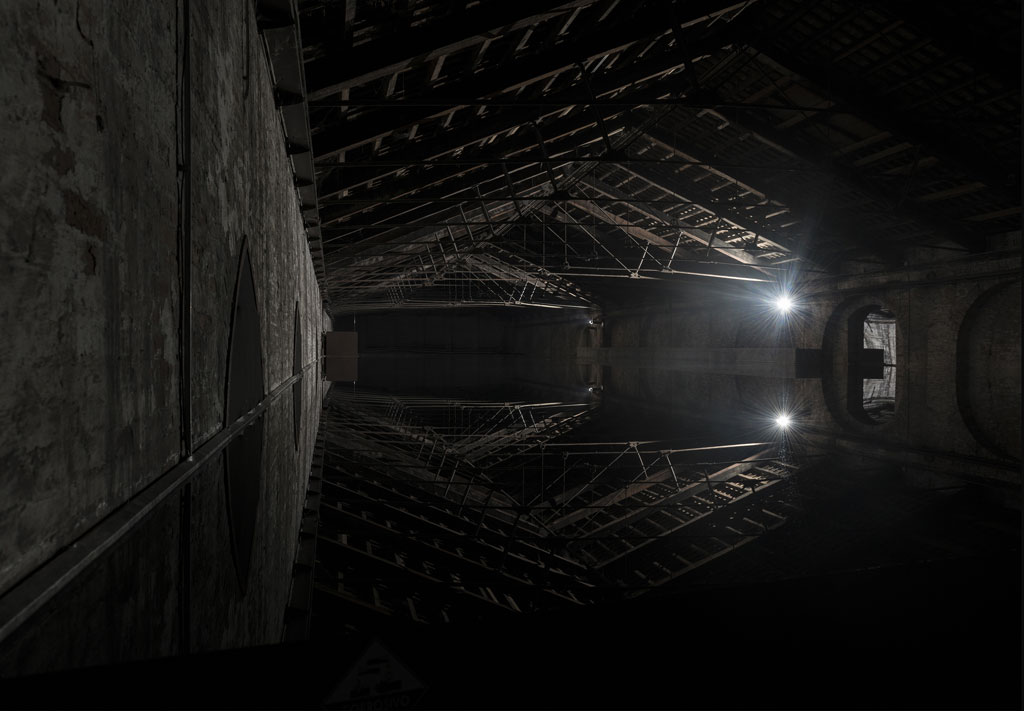ART CITIES:Milan-Giorgio Andreotta Calò
 Giorgio Andreotta Calò represented Italy at the 57th Venice Biennale (2017). His works include sculptures, large-scale site-specific installations and spatial works that transform both fragments of buildings and entire landscapes; they are often designed to be included in a rich patchwork of self-referencing connections, in part through the use of natural elements dense with symbolic meanings, such as water, light and fire.
Giorgio Andreotta Calò represented Italy at the 57th Venice Biennale (2017). His works include sculptures, large-scale site-specific installations and spatial works that transform both fragments of buildings and entire landscapes; they are often designed to be included in a rich patchwork of self-referencing connections, in part through the use of natural elements dense with symbolic meanings, such as water, light and fire.
By Dimitris Lempesis
Photo: Pirelli HangarBicocca Archive
Giorgio Andreotta Calò’s work is rooted in conceptual and processual practices typical of artists of the 1960s and 1970s but it also evolves into new directions. It always comes as the result of a long process of research into materials, from the more classical, such as bronze and wood, to the more unusual, such as caranto clay, the submarine layer beneath the city of Venice, processing techniques and their origin. His interest in organic materials links his works to current international debates on the use and dispersal of raw materials and themes of socio-ecological change. The constant re-elaboration and reconfiguration of his works based on the geographical and cultural context in which they are exhibited is an integral part of his artistic methodology. For his solo exhibition, “CITTÀDIMILANO”, the artist focuses on his sculptural practice, displaying works created since 2008, and here conceived as part of a single landscape that transforms the perception of the environment and highlights the links existing between the artworks in a close dialogue. Visitors are invited to make their own connections and create their own route through the exhibition. Giorgio Andreotta Calò has also carried out research into the history of the Pirelli Company, creating new works that bring to light previously unknown stories from the past, linked to the city of Milan but similarly related to themes and locations already present in the artist’s work. The visitor is welcomed into the exhibition space by the projection of underwater images of the submerged shipwreck of the “Città di Milano”, from which the exhibition takes its name. Used at the beginning of the last century by the company then known as Pirelli Cavi to lay underwater cables in the Mediterranean Sea, the ship sank close to Capo Graziano on the island of Filicudi, near Sicily, on 16/6/1919. The artist extrapolated video footage from archive material filmed on the wreck at a depth of 100 meters in 2015. He then assembled this into a work that serves as a prelude and leitmotif to the exhibition that is linked to ideas of navigation, immersion and surfacing, and stratification, in a physical, symbolic, historical and geographical sense. One further reference to this story is provided by the presence in the exhibition of a damaged section of cable, over 30 meters in length, used for the underwater transmission of data. Dating from the 1990s, it was recovered near Ischia, in Italy, during maintenance work; and suspended from the ceiling, the cable takes on an organic and zoomorphic appearance. Both works reflect the artist’s interest in the connection and transmission of information, particularly between distant or separate locations. Works on display include some of Giorgio Andreotta Calò’s largest sculptures; their layout, designed by the artist, deconstructs the architectural symmetry of the space and transforms the setting in a way that presents visitors with the chance to glimpse something that lies beyond. Interested in the representation of the passing of time and processes of transforming material, Andreotta Calò occupies the entire surface area of the exhibition with “Produttivo” (2019), a new installation forming part of a series of sculptures begun in 2014, and consisting of samples of rock and sediment taken from the subsoil of the Venice Lagoon (2014) and the Sulcis Iglesiente mining area in Sardinia (2016 and 2019). The placement of the samples on the ground reflects their original location and depth, highlighting the various stratifications and chromatic features but overturning the vertical dimension of these geological extractions in the horizontal and linear exhibition space. These works are linked both geographically and thematically to the 16mm film “In girum imus nocte” (2016), which was made in the Sulcis Iglesiente*, where the artist spent long spells researching and working between 2013 and 2015. The film shows a dreamlike night-time journey undertaken by the artist inside the Carbosulcis mine and, on foot, with the workers, to the nearby island of Sant’Antioco. The body of works known as “Clessidre” (1999- ) is a formal representation of the passing of time. These bronze sculptures are made using a technique typical of Andreotta Calò’s art, the lost wax casting, from Venetian mooring piles that are often corroded by water in their midsection. Both the action of water and that of the artist therefore contribute to determining the shape of the sculpture. This work is linked technically to another series begun in 2013, the “Meduse” in which the artist works directly on the same types of wooden poles; these are transformed into sculptures that resemble jellyfish, or meduse, from which further bronze works are cast. This process of transfiguring the material and natural elements emerges in other works on display at Pirelli HangarBicocca, such as the two “Pinna Nobilis” (2014- ) and “DOGOD” (2014- ) series. The title and shape of the former derive from the shell of the mollusk of the same name, an organism endemic to the Mediterranean; while the latter series is rooted in bone elements from the island of Sant’Antioco in Sardinia, reassembled by Andreotta Calò to create a new shape, the face of a dog.
*The Sulcis-Iglesiente is an historical region of southwestern Sardinia comprising, as the name suggests, the territories of Sulcis and Iglesiente. It is included in the province of South Sardinia.
Info: Curator: Roberta Tencon, Pirelli HangarBicocca, Via Chiese 2, Milan, Duration : 14/2-21/7/19, Days & Hours: Thu-Sun 10:00-22:00, www.hangarbicocca.org







